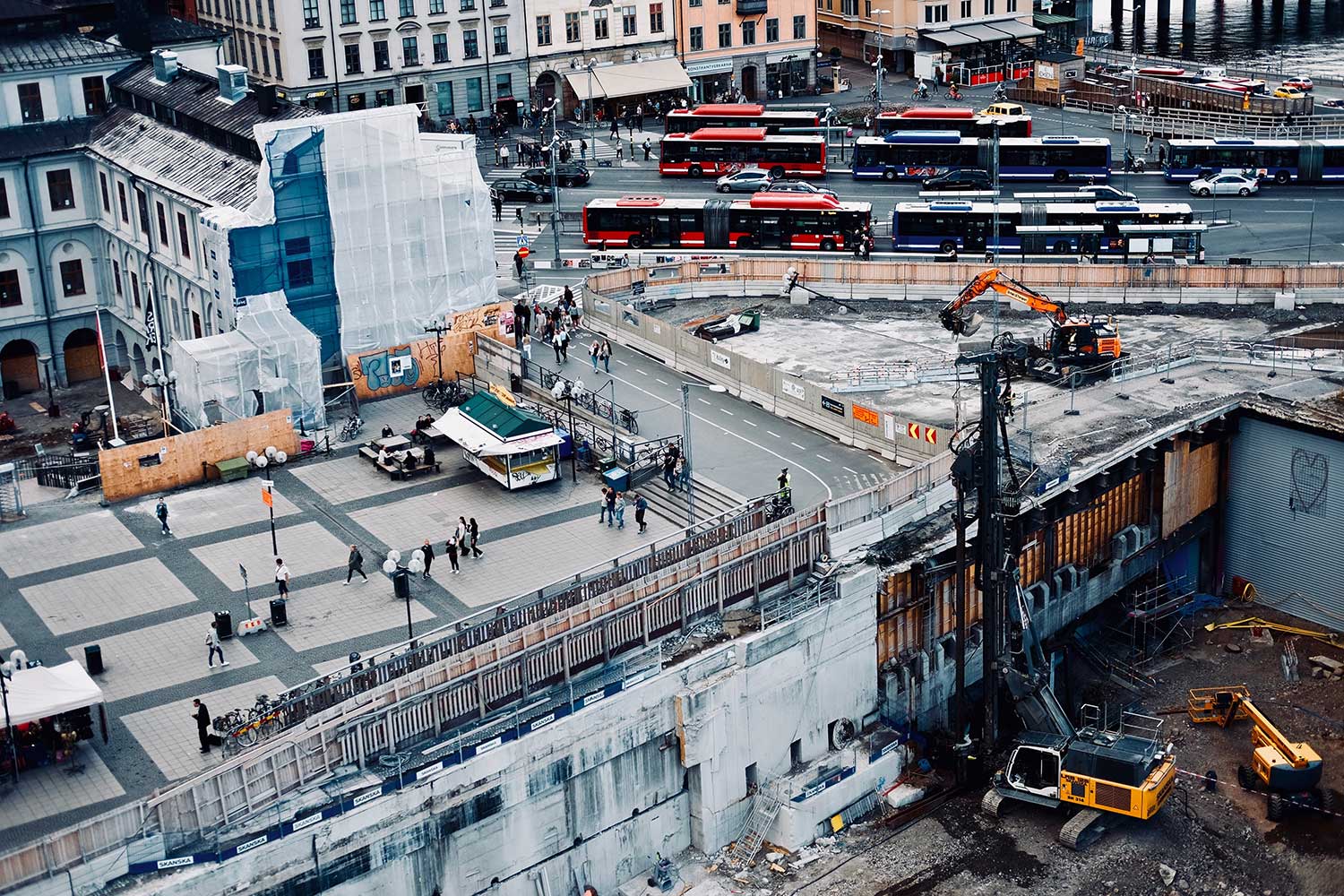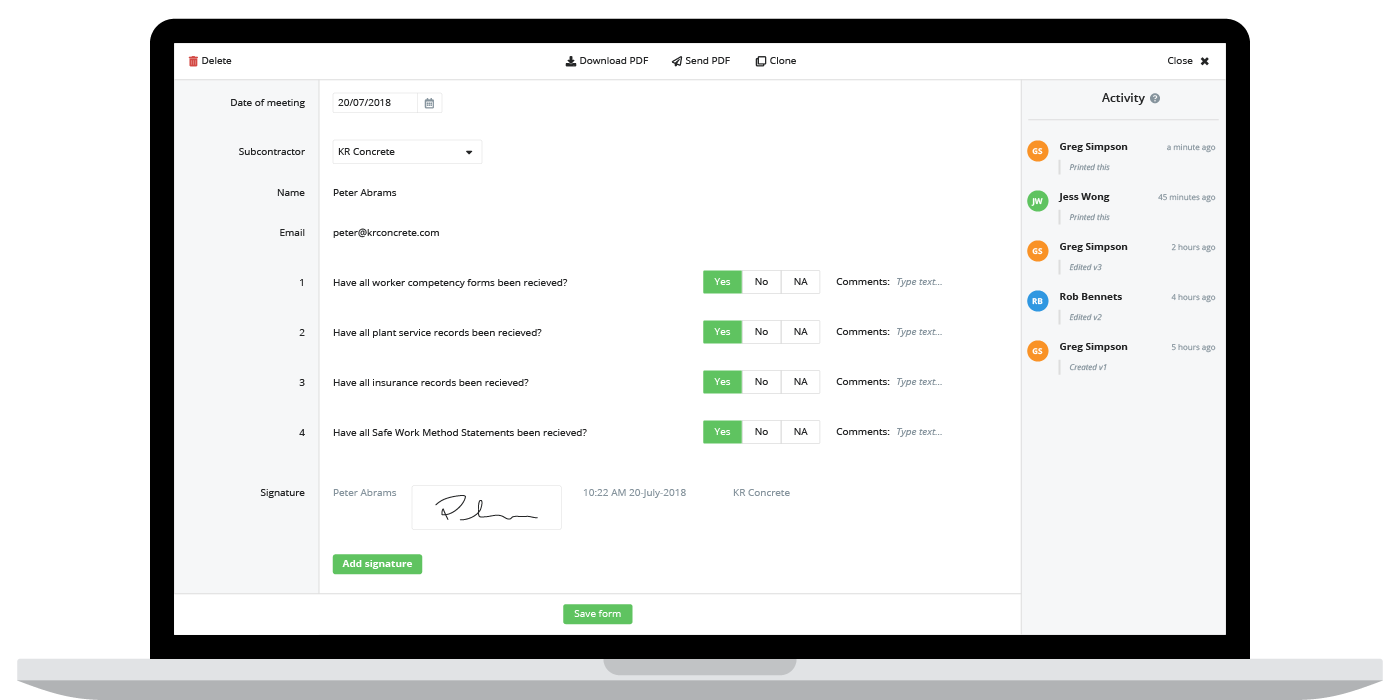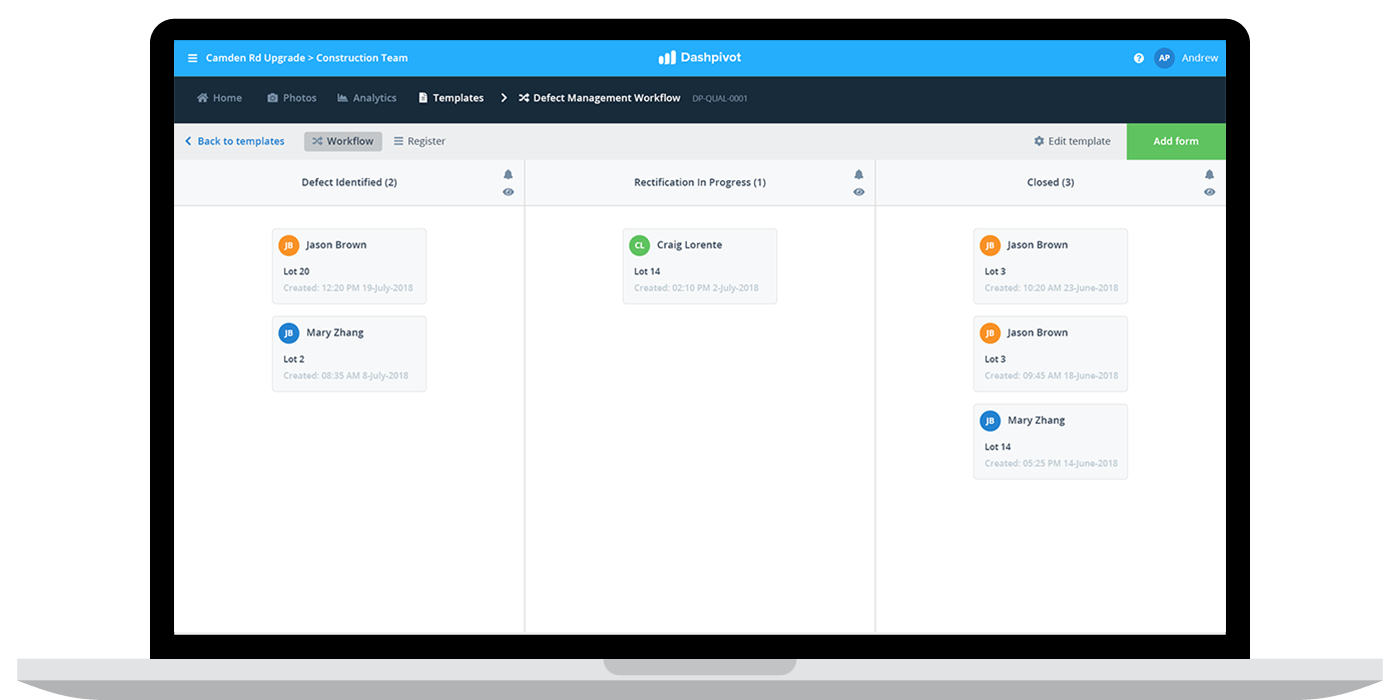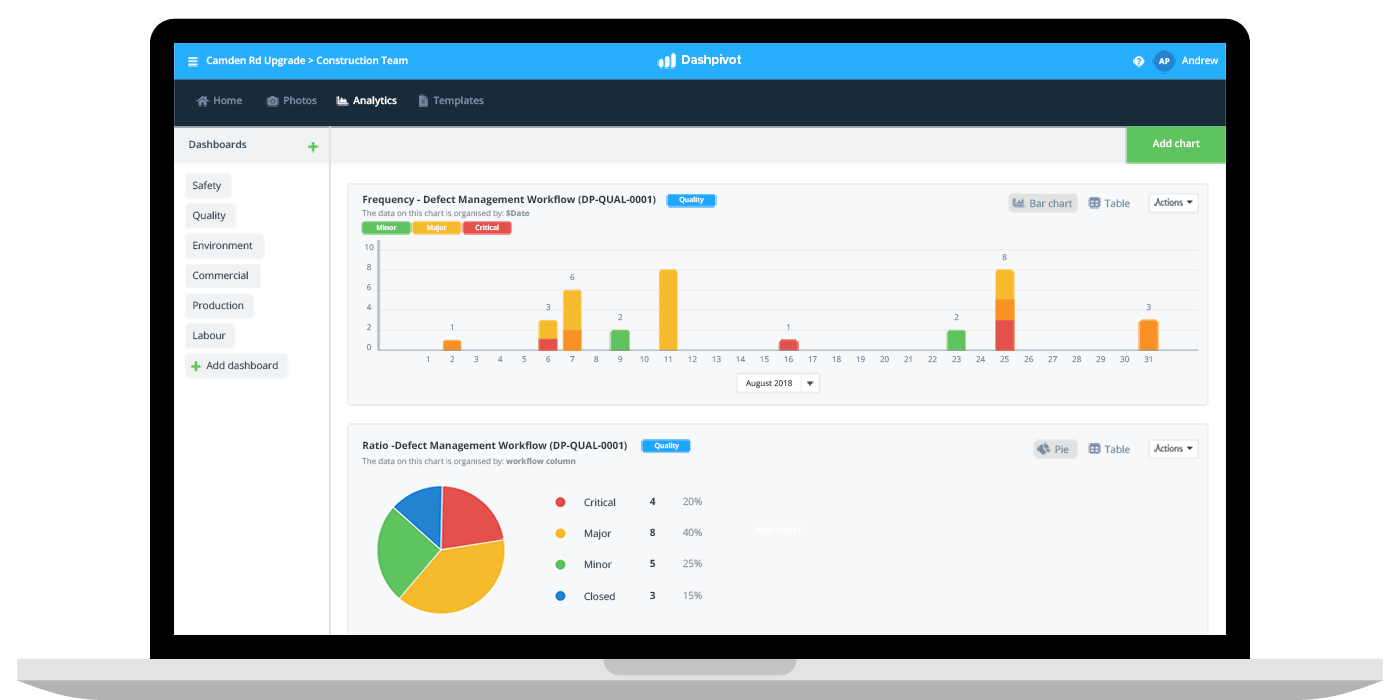Commercial – Subcontractor management process
Subcontractor management process
This post tells you everything you need to know about the ideal subcontractor management process, showing you how to find, hire, and work with subcontractors the right way, for the sake of you and the subcontractor.

What does a good subcontractor management process look like?
Construction and other industrial projects feature a tightly connected web of inter-dependant parties who work together and rely on each other to deliver projects on time, on budget and safely.
Because of this, managing other parties can often be almost as important as managing your own workers and teams. If a contractor can't manage their subcontractors properly, then their projects will inevitably suffer.
A good subcontractor management process is one which is standardised and reliable, and which can be continuously improved over time.
Subcontractor management processes which are improvised and changed for every project become messy, and a lot of time is wasted sorting out manual processes and manual communication methods.
Creating uniform processes and procedures for all of your subcontractors and all of your projects greatly reduces variation and unknowns which in turn reduces risk - the main goal of managing any type of information.
While different projects will require some level of variation, your subcontractor management process should stay as consistent as possible - which will allow you to build consistently positive subcontractor relations and deliver projects while keeping everyone on side.
The subcontractor management process
The subcontractor management process can vary significantly from contractor to contractor and company to company. The size of the projects being worked on and the size of the contracts can vary massively from subcontractor to subcontractor, and different sized projects will require varying levels of detail in the four main phase of subcontractor management:
Phase 1 - The pre-award phase
The phase where a contractor or company identifies subcontractors which can fulfil their project needs, and receives quotes, bids and proposals from different subcontractors.
Phase 2 - The award phase
Involves outlining the contract and establishing the policies and procedures under which the subcontractor shall work
Phase 3 - The post-award phase
The project delivery phase, which features ongoing communication and monitoring of project delivery
Phase 4 - The close-out phase
The phase whereby the contractor or responsible party works with the subcontractor to ensure that all of the subcontractors obligations have been met
Within each of these subcontractor management process phases, there is a lot of work and information changing hands, so having effective and streamlined processes can save thousands of hours over the course of a project.
Your subcontractor management process should resemble the subcontractor register below. Be organised and quickly actionable.

Use this subcontractor management register for free.
The trickiest parts of your subcontractor management process...
Today, we are going to focus on the messiest and most difficult parts of the subcontractor management process:
Phase 3 - The post-award phase
Phase 4 - The close-out phase and how it links back to phase 1
The pre-award and award phase of subcontractor management are obviously critical, as that's when you decide which subcontractors to work with - but that part of the process features more variables involving your pre-existing relationships, and we are more interested in looking at how phase 4 can influence phases 1 and 2 of your next project.
Phase 3 - Project delivery
The project delivery phase is where your subcontractor management process is put under the most pressure. project delivery is when the thousands of moving pieces start moving, and when monitoring subcontractors and their teams as well as your own can become quite the task.
While there are some manual process and procedural improvements which can impact your subcontractor management process positively, one of the quickest and easiest wins you can have across your entire project and subcontractor portfolio is to take advantage of subcontractor management software.
These softwares enable you to streamline the capture, organisation and tracking of subcontractors, automatically - starting with pre-qualifications and inductions.
Managing the movements of subcontractor and their teams can be hard, and extremely risky. From a subcontractor management perspective, you need to ensure that everyone coming onto your sites has all of the right certificates and licenses.
Softwares systems can streamline this process, by enabling site workers to directly induct subcontractors on site using a tablet or phone, and all of the new records are automatically piped into the register so that your records stay organised and up-to-date.

You can apply the same streamlined digital processes to your other subcontractor management processes. Subcontractors can add progress photos and fill in dairies and reports which are instantly synced to the cloud.
Project managers and other stakeholders can stay on top of everything happening on their projects from a single system - instead of having to jump back and forth between word docs, PDFs, spreadsheets and email.
On top of this, critical workflows which span across parties can be automated through smart workflows like this.
When a subcontractor creates a safety or defect permit for example, the contractor or responsible party or person will get an instant and automatic notification.
They can sign off on the permit or approval-based document so that work can continue. This speeds up and improves the communication between parties as well as ensures that subcontractors follow the processes and procedures laid out by the contractor or owner.

Phase 4 - The close-out phase
Capturing and organising all of the information during the project delivery phase of your subcontractor management process goes a long way to giving you the controls and power to better close-out the project.
One of the most important parts of the close-out phase for subcontractors and contractors is to assess performance.
Once the project has been closed out and everyone has completed their work, project parties can take stock of what happened and analysed how things went.
The best mechanism for sharing how other parties went and also analysing the performance of other parties is the subcontractor evaluation (or contractor evaluation if the boot is on the other foot).
While this step can be slightly awkward (mostly dependent on whether performance is good or bad), it's a critical step in the subcontractor management process.
It allows companies to share their feedback and be transparent about the arrangement, and creates a feedback loop for subcontractors which enable them to understand what they are doing well (or not doing well), and gives them things to improve.

Use this subcontractor evaluation sheet now.
While these evaluations used to be based largely on gut feel and relationships, as well as elements of performance - today, these evaluations and the information in which contractors and asset owners can use to decipher performance is on another level.
Detailed analytics which can be tracked throughout a project can give a contractor or asset owner complete insights into a subcontractors performance including:
- Safety performance - how many safety incidents, hazards etc. were associated with a subcontractor
- Quality - How many defects or quality issues was a subcontractor responsible for
- Commercial and production - Did the subcontractor submit and maintain their site diaries and progress reports
All of these insights can be found and pulled from automated dashboards inside of a system like Dashpivot.

These dashboards are updated in real-time throughout a project, and can be constantly monitored and then referred to after the project has been closed out to properly and fairly assess performance.
The power of these dashboards extends far into the next project.
This type of detailed performance data gives a contractor or project party the type of information they have always wanted, to start making more informed decisions about their projects.
Over the course of a project, patterns and performance issues become noticeable when tracked properly. These patterns can then be used to help you make a decision about which subcontractors to use in the future.
The subcontractor management process is never easy. Managing subcontractors involves a lot of coordination and organisation.
Handing the difficult and time-consuming parts of the subcontractor management process off to a system like this is the quickest and easiest step you can take to improving and standardising your subcontractor management process for good.

Site diary template
Record and share subcontractor performance for the benefit of all with this reliable checklist.

Subcontractor Lien Waiver Form template
Improve how you manage the universally painful and time-consuming process of creating, managing and issuing lien waivers.

Contractor Quote template
This contractor quote template makes creating, managing and sharing big and small quotes more professional than traditional quote documents.


